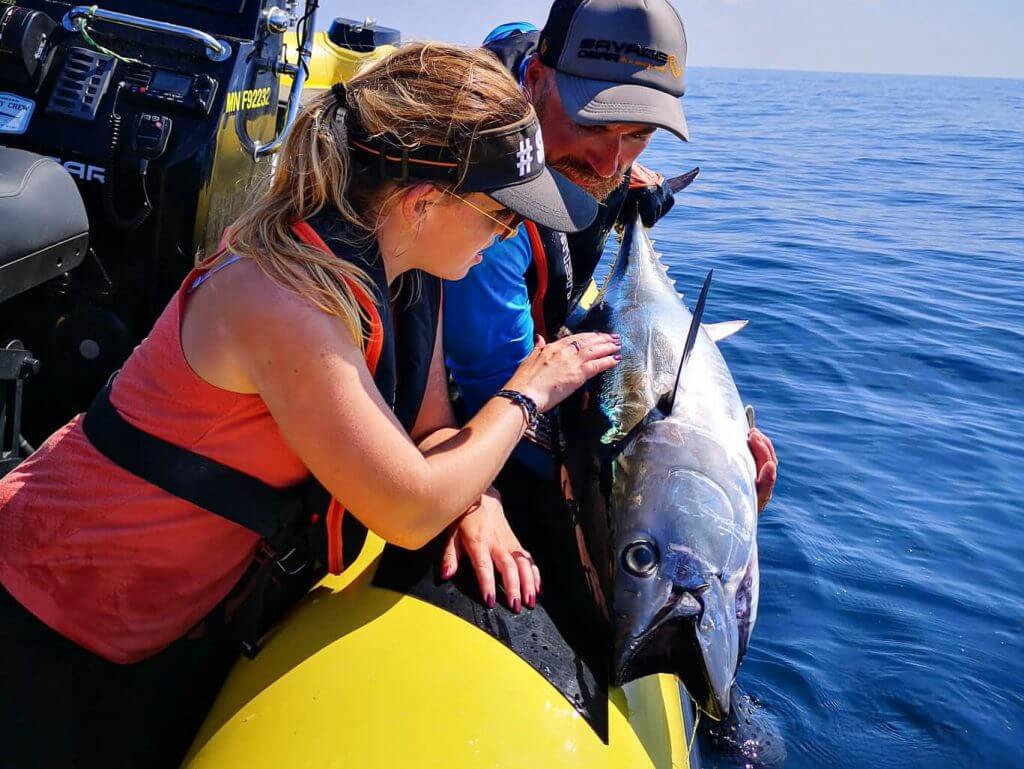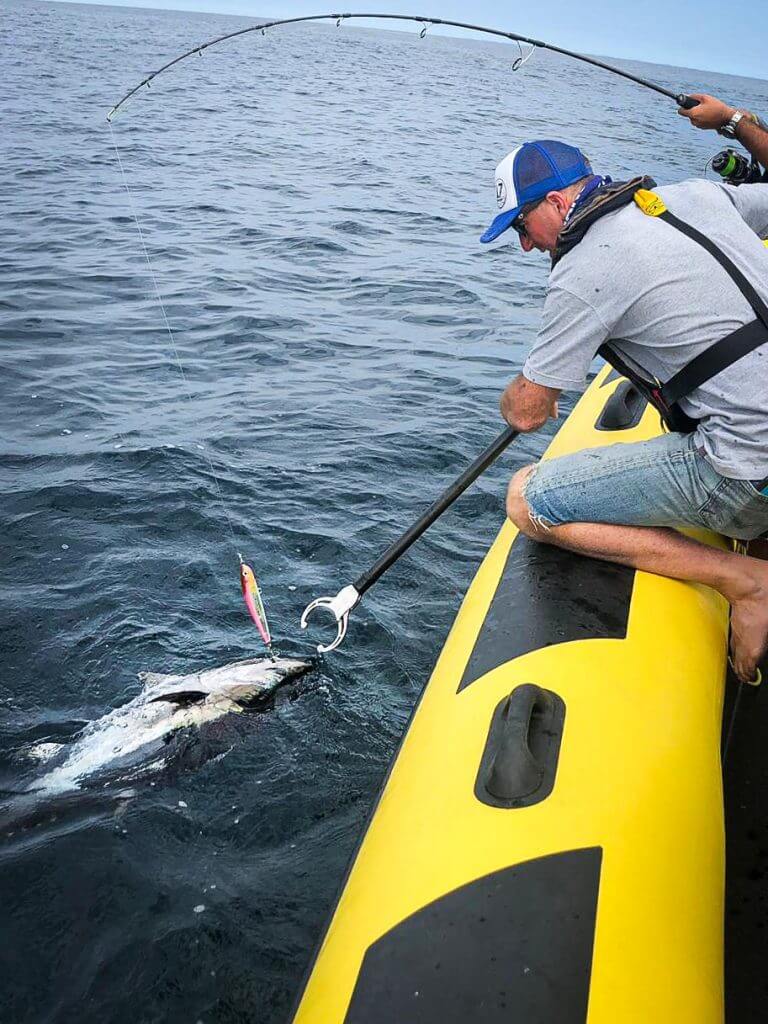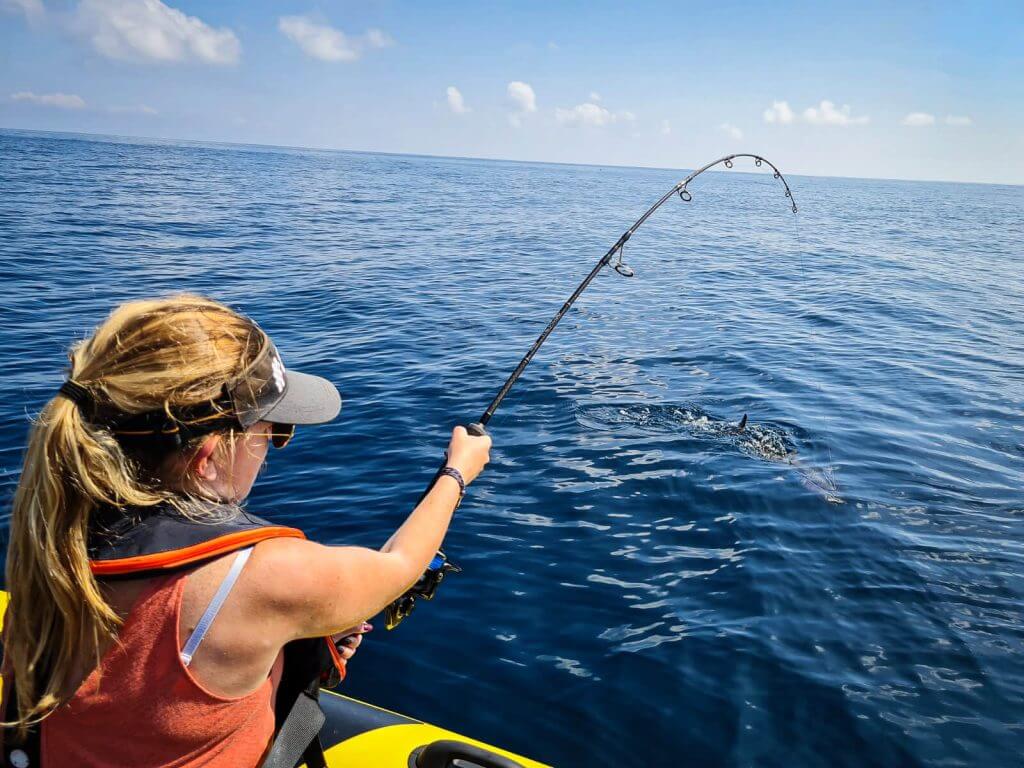
For the more novice among you, big-game fishing is typically the technique used to flush out the most powerful and imposing fish in terms of size and weight that can be found at sea.
Several techniques can be used, the aim being to target trophy fish. We'll see how some of them have proved their worth. We'll be taking a look at the classic trolling technique, as well as lure fishing and the increasingly popular bait fishing.
In detailing some of these techniques, we'll give you the key features you need to choose to get the right equipment.
Trolling
Although at first glance this technique may seem easy to set up, it is in fact particularly difficult. Anglers need a great deal of experience to be successful and to be able to give good advice.
First of all, you'll need a boat that's adapted to this type of fishing. After all, it's not the same to fish for bass on a return cast as it is to go after tuna with Poppers weighing in excess of 100g. If you're really interested in tuna fishing, our article Where to fish for tuna? How to fish for tuna? should be of great interest to you. We'll be looking more closely at the second configuration when we talk about big-game fishing in saltwater.
You'll need a reliable engine for your safety, of course, but you'll also need a large enough fuel tank to keep you going for most of the day. For the more remote sectors, you'll need to opt for fast travel to reach the fishing grounds and make the most of your outing.
The concept is to find areas where the fish are holding and to be able to offer them a lure that will make them attack. The main objective is to simulate a small prey that runs away, which these large pelagic fish like to pursue. The speed at which you move the rig will be of vital importance. Too fast or too slow will bring you little or no results and, depending on the sector and the season, this varies all the time.
Observation is clearly one of the most effective methods. There are also electronic tools that can allow you to record seagull hunting, often indicating very interesting activity for your fishing. These investments can be quite substantial, but will save you precious time so that you can concentrate on technique and the pleasure of a day's fishing before returning to port.
When it comes to equipment, you can't use just any rod and reel to tackle these big fish. You'll need to opt for purchases that are totally consistent with the power of the bites and the fight.
Whether you're fishing in the Atlantic or the Mediterranean, you'll need the right equipment. Rods will be relatively short, offering greater resistance and eliminating the need for casting. The reels will be mainly round profiles, offering very high braking power, but also a retrieve adapted to these species of fish and a very high line body capacity.
Sport fishing with lures, a unique world

Lure fishing is a fairly recent technique in fishing, and our Top 10: Lures for Big Game Fishing will provide you with lots of interesting information. Once used to feed part of the population, fishing can now be seen as a leisure activity without necessarily taking resources. It's also in the air these days, with governments keen to preserve the most fragile species, such as tuna in France, just as they do for pike and trout in freshwater.
The lure has that little something extra that makes it easy to pardon the fish. This ensures that you always stay within the regulations and can play an active part in the well-being of our oceans. What's more, this technique can be used just about anywhere in the world to target a wide variety of predator fish.
The principle is quite simple: cast a lure from a safe distance and bring it back to imitate a small fish in the best possible way. The predator will be interested in this easy-to-hunt fish to feed on.
Depending on the fishing area and the fish you're after, you'll come up with completely different types of lure. Between poppers, sliders, jigs, jerkminnows and many other technical names, you'll be spoilt for choice when trying to match the habits of your target fish.
The choice of tackle will be a little complex. Depending on where you're going to fish and the lures you're going to use, it can vary a lot. It won't be unusual to have to invest in combos or at least rods with different actions and powers. You may also have to worry about taking up too much space if you decide to go fishing on islands such as Reunion or Madacasgar.
But if you don't have any knowledge in this field, we advise you to write to us or call us to tell us what you need. We'll be happy to take the information you give us and guide you as best we can to make your fishing day or days a success.
Bait fishing

This is perhaps the easiest technique to use, as it relies on the fish's instinct. A bait is an easy prey that the fish will not fail to take in order to feed. The vast majority of carnivores are opportunists, preferring to expend less energy to find food.
As in freshwater, fishing with meat products generally targets larger fish. The latter will tend to be more wary, moving less close to the surface where the lures or spinners tend to move.
By being able to reach great depths, you can target different subjects, a bit like jigging. You will also be able to offer bigger baits, capable of selecting the fish that can attack them.
Other techniques exist to increase your chances of catching a fish. One of these is scrambling, which takes a bit of learning, but is extremely effective when you know how to position your bait and where the fish are going.
As you can see, there are many possibilities when you're looking for big fish. While you often need a boat to access the holding areas of these species, it is above all important to be equipped with the right gear that's tough enough to take on the giants of the seas and oceans, whether in Normandy, the Mediterranean or exotic destinations.
